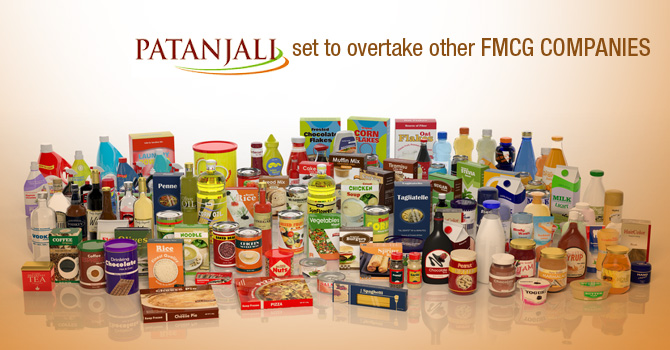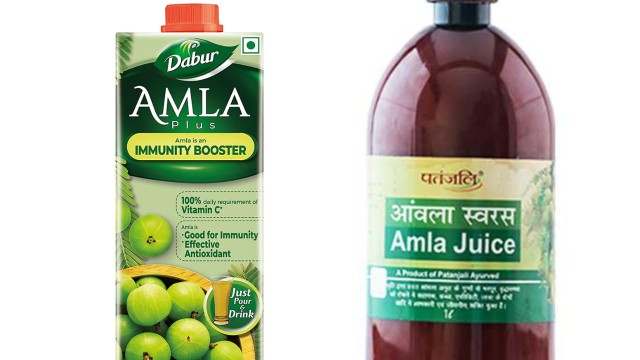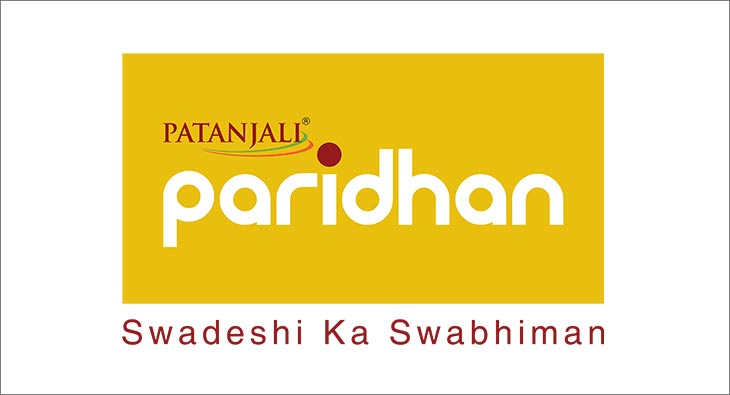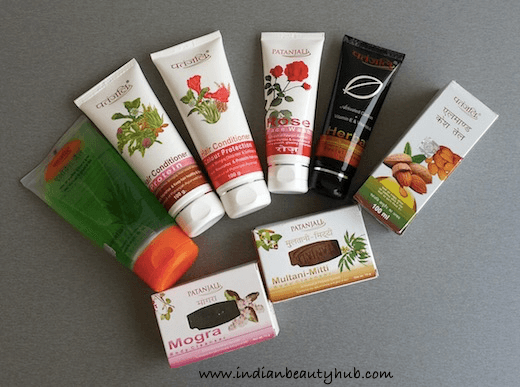A brand that needs no introduction, has taken the world by storm with its organic and natural products. Founded in 2006 by Baba Ramdev, Patanjali has become a household name in India, and its impact has even reached global markets.
With an emphasis on Ayurveda and natural ingredients, Patanjali has created a niche in the wellness industry.
But how did this brand achieve such unprecedented success? What sets Patanjali apart from other players in the market? In this case study, we will look closely at Patanjali's brilliant marketing strategy and discover the secrets behind its meteoric rise to the top.
A brief history of Patanjali
Founded in 2006 by Baba Ramdev, a renowned yoga guru, and Acharya Balkrishna, a herbal expert, Patanjali has become a household name in India and beyond. Inspired by Ayurvedic medicines, a traditional Indian medicine system, Patanjali began to provide consumers with organic and natural products.

Source: Startup Talky
But what many people don't know is that this vision was actually born much earlier, in 1995, when the duo founded Divya Pharmacy in Haridwar, India.

Source: Patanjali Ayurved
As the pharmacy was registered as a trust, the initial years were tough, but the duo persisted and began to gain a following. With their affordable prices and natural ingredients, Patanjali's products quickly became a favorite in the Indian market. Their unique selling proposition was their emphasis on using only natural ingredients, and their branding was designed to reflect this message. The brand's packaging was simple and straightforward, with a focus on the ingredients used in each of the Patanjali products.

Source: ISRG KB
With humble beginnings in Haridwar, India, Patanjali has now grown into a multi-billion dollar empire with a wide range of products including food, cosmetics, and health supplements. The brand's revenue skyrocketed from just a few million dollars in 2010 to over 1.3 billion dollars in 2017.
As of 2021, Patanjali has over 1,900 stores across India and has a strong online presence with its e-commerce platform, which contributes to around 10-15% of its total sales. The company also exports its products to several countries, including the USA, Canada, and the UAE.
In terms of market share, Patanjali is now one of the largest FMCG players in India, with a market share of around 5.2% in 2020. The company's growth story is a testament to its unique selling proposition of providing natural and healthy products, aggressive marketing strategy, and strong online presence.
What does Patanjali believe in?
Patanjali's mission is to spread knowledge of Ayurveda and natural remedies for the well-being of all.
Patanjali's corporate vision is to create a world where people live in harmony with nature and achieve holistic wellness through natural remedies.
In simpler terms, Patanjali's brand ambassador, Baba Ramdev wants to share the ancient wisdom of Ayurveda with everyone, and inspire people to live in sync with nature for better health and happiness. They aim to make holistic wellness accessible to all and envision a future where people lead a sustainable lifestyle in harmony with the environment.
How Patanjali became a leading player in the FMCG sector?
Having emerged as a major player in the FMCG sector, Patanjali's success can be attributed to several factors.

Source: India Map
Firstly, the company relied heavily on word-of-mouth marketing, as satisfied customers recommended the products to their friends and family. This helped to build trust and credibility for the brand.
Secondly, Patanjali's products were priced competitively, making them accessible to people across different economic segments. This allowed the brand to penetrate into the rural and semi-urban markets, which were largely ignored by other FMCG players.
Thirdly, Patanjali's commitment to the quality and purity of its products resonated with consumers who were becoming increasingly aware of the harmful effects of chemicals and preservatives in conventional products.
What about its pricing strategy?
Patanjali's pricing strategy is based on offering affordable and value-for-money products to consumers. The company relies on a low-cost model, with minimal advertising and marketing expenses, to keep its prices low. This allows Patanjali to tap into price-sensitive segments of the market, especially in rural and semi-urban areas.
Patanjali's focus on natural and organic materials also helps to differentiate the brand image from its competitors and justify its premium pricing in some segments. Additionally, the company has diversified into various product categories, allowing it to leverage economies of scale and keep costs low.
Overall, Patanjali's pricing strategy has helped the company to establish itself with healthy profit margins and a loyal customer base.
So, what makes Patanjali’s business model and marketing strategies successful?
Patanjali's business model and digital marketing strategies are a perfect blend of ancient wisdom and modern marketing techniques. Their focus on natural and Ayurvedic products, combined with a low-cost business model, competitive pricing, and strong distribution network has helped them tap into price-sensitive segments of the market.
Additionally, their reliance on word-of-mouth marketing and strong brand ambassadors has helped to create a sense of trust and loyalty among their customers. Overall, Patanjali's success is a testament to the power of combining traditional wisdom with innovative business practices. But what exactly is the reason behind its triumph? Let’s take a look at Patanjali’s marketing mix:
What is Patanjali’s marketing strategy?
Patanjali's mission has been to establish itself as a unique space where customers can experience the benefits of Ayurveda beyond their homes and workplace.
To realize this objective, Patanjali's marketing plan has been meticulously crafted to cater to both loyal customers and occasional customers by ensuring a consistent brand experience.
In the upcoming sections, we will explore Patanjali's essential marketing mix strategies, including product, price, placement, and promotion.
Patanjali’s Promotion
Patanjali's promotion strategy relies on minimal advertising and marketing expenses. Instead, the company leverages the popularity of its founders, Baba Ramdev and Acharya Balkrishna, who have a strong following as yoga gurus. This helps to create a sense of trust and credibility among Patanjali's customers.
Additionally, the company relies on word-of-mouth promotion from its satisfied customers, who often recommend Patanjali's products to their friends and family.
Patanjali’s Pricing
Patanjali's pricing strategy is based on offering affordable and value-for-money products to consumers. The company relies on a low-cost model, with minimal advertising and marketing expenses, to keep its prices low. This allows Patanjali to tap into price-sensitive segments of the market, especially in rural and semi-urban areas.
For example, Patanjali's popular Dant Kanti toothpaste is priced at INR 70 for 200g, while Colgate's 150g toothpaste is priced at INR 88.

Source: Marketing Mind
Similarly, Patanjali's Amla Juice is priced at INR 110 for 1 liter, while Dabur's Amla Juice is priced at INR 140 for 1 liter.

Source: Health & Healthier
By keeping its prices low, Patanjali has been able to appeal to a wide range of consumers, especially in rural and semi-urban areas.
Patanjali’s Product
Patanjali's products are based on the principles of Ayurveda and natural remedies. The company offers a wide range of products across various categories, including personal care, food and beverages, and healthcare. This helps Patanjali to cater to a wide range of consumers with diverse needs.
Patanjali’s Placement
Patanjali Ayurveda has a strong distribution network, with its products available in multiple channels, including its own retail stores, e-commerce platforms, and third-party retailers. The company has a presence in both urban and rural markets, which has helped it to penetrate into previously untapped segments of the market.
Iconic Marketing Campaigns by Patanjali
Patanjali, the homegrown Ayurvedic brand, has created a stir in the Indian market with its innovative and disruptive marketing campaigns. Let's take a closer look at some of the brand's most iconic campaigns that have left an indelible mark on the minds of consumers.
#SwadeshiKaSwabhiman
Patanjali Paridhan, the brand's clothing line, is a bold step into the fashion industry by Baba Ramdev. In its #SwadeshiKaSwabhiman campaign, Patanjali showcased its commitment to promoting indigenous textiles and traditional craftsmanship.
The campaign featured models wearing elegant and stylish ethnic wear, emphasizing the brand's focus on merging traditional textiles with contemporary fashion. This campaign was a resounding success, as it helped position Patanjali as a brand that is not only committed to promoting traditional Indian textiles but also catering to the modern consumer's fashion sensibilities.

Source: Exchange4Media
Healthy India banaenge, Patanjali biscuit khaenge
"Healthy India banaenge, Patanjali biscuit khaenge" which translates to "We'll make India healthy, we'll eat Patanjali Biscuits", is another campaign that has been incredibly successful in promoting the brand's commitment to health and wellness.
In this campaign, Patanjali showcased the goodness of its biscuits, which are made from natural ingredients and free from harmful chemicals. The campaign featured catchy jingles and memorable visuals, emphasizing the brand's focus on providing healthy living and nutritious products to its customers.
This campaign helped establish Patanjali Ayurveda as a brand that not only cares about its customers' health but also understands their need for tasty snacks that are guilt-free.
Haridwar se Har dwar tak
Patanjali's "From Haridwar to every doorstep" campaign was another noteworthy initiative by the brand.
In this campaign, Patanjali Ayurveda showcased its vision of taking the goodness of Ayurveda to the world and positioning itself as a global brand. The campaign featured a series of advertisements that highlighted Patanjali's global footprint and its commitment to providing high-quality, authentic Ayurvedic products to consumers around the world.

Source: YouTube
In-store Marketing
Patanjali's in-store marketing tactics are an essential part of its branding strategy, and the company has invested heavily in creating an immersive shopping experience for its customers.
One of the most impressive examples of Patanjali's in-store marketing efforts can be seen in its flagship store in Haridwar, India. The store features a massive statue of Patanjali, the founder of yoga, at the entrance, creating a sense of reverence for the brand's roots in Ayurveda and natural health.

Source: Wikimedia Commons
The store's interior is designed to reflect this same ethos, with wooden shelves, natural lighting, and minimalistic signage that highlights the products' health benefits.
Another example of Patanjali's in-store marketing efforts is its product packaging, which is designed to stand out on shelves and convey the brand's commitment to natural and organic ingredients.

Source: Packaging South Asia
For example, Patanjali's aloe vera gel comes in a green and white tube that features images of aloe vera leaves and emphasizes the product's soothing and healing properties. Similarly, Patanjali's honey packaging prominently features the company's branding strategy and includes detailed information about the product's nutritional value, educating customers and building trust in the brand.
Patanjali Ayurveda also uses in-store demonstrations and sampling to engage customers and encourage sales. For instance, the company often sets up a small counter where customers can try its natural and organic beauty products and herbal products such as hair oil or face cream. This approach allows customers to experience the benefits of the products firsthand, increasing the likelihood of a sale and building brand loyalty.
In summary, Patanjali's in-store marketing efforts reflect its commitment to Ayurveda and natural health. By creating an immersive shopping experience that emphasizes the brand's values and showcases its products' benefits, Patanjali Ayurveda has built a loyal customer base and established itself as a leader in the natural and organic market.
Organic Expansion Beyond Food Products
Patanjali's success in the food industry is well-documented, but the company's strategy extends beyond just food products. The Patanjali group has made a conscious effort to expand its product line to cater to a broader audience, with a focus on natural and organic products across various industries.
One notable example of Patanjali's expansion beyond food products is its foray into the beauty and personal care sector. The company has launched a range of natural and Ayurvedic beauty products, including shampoos, soaps, face washes, and lotions.

Source: IBH
One of Patanjali's best-selling herbal products is its hair oil, which is formulated with natural ingredients such as amla, bhringraj, and sesame oil. The product is touted for its ability to nourish the hair and promote growth, and it has gained a massive following among customers looking for natural alternatives to chemical-laden hair products.

Source: YouTube
Another example of Patanjali's diversification strategy can be seen in its line of natural and organic cotton clothing. The company's clothing range includes traditional Indian wear such as kurta-pajamas and sarees, as well as contemporary western styles such as t-shirts and jeans. All of the clothing is made with natural fabrics and dyes, in keeping with Patanjali's commitment to sustainability and eco-friendliness.

Source: DailyMotion
Patanjali has also expanded into the household products market, with its range of cleaning products, detergents, and dishwashers. These products are formulated with natural ingredients and are free from harmful chemicals, making them an attractive option for customers looking for eco-friendly alternatives to conventional cleaning products.
Overall, Patanjali's approach to diversification has been driven by its commitment to natural and organic products. By extending its product line beyond food products, Patanjali has established itself as a one-stop shop for customers looking for natural and eco-friendly alternatives across various industries. The company's success in these new ventures demonstrates its ability to stay ahead of market trends and respond to changing customer demands.
How Patanjali's marketing strategy cracked the code?
By tapping into a growing demand for natural and organic products, Patanjali has positioned itself as a leader in the market.
Let's explore some of the key elements of Patanjali's digital marketing strategy that make its products attractive to customers.
-
Emphasis on natural and organic ingredients
One of the core principles of Patanjali's marketing strategy is its emphasis on natural and organic ingredients. The company uses Ayurvedic principles to develop its products, using herbs and natural ingredients to promote health and wellness. For example, Patanjali's aloe vera gel is formulated with natural ingredients and is touted for its ability to nourish the skin and promote healing.
-
Affordable pricing
Another key element of Patanjali's marketing strategy is its focus on affordable pricing. The company aims to make natural and organic products accessible to all customers, through budget friendly products. For example, Patanjali's coconut oil is priced significantly lower than other brands on the market, making it an attractive option for customers looking for an affordable, natural alternative.
-
Wide range of products
Patanjali offers a wide range of products, from food and beverages to personal care items, clothing, and household products. This strategy enables the company to cater to a broader audience, and customers can find all of their natural and organic needs in one place. For example, a customer shopping for groceries at a Patanjali store can also purchase natural cleaning products and organic clothing, making it a convenient one-stop shop for all their needs.
-
Celebrity endorsements
Patanjali has leveraged celebrity endorsements to boost its brand image, build customer loyalty, and attract new customers. For example, famous Indian yoga guru Baba Ramdev is the brand ambassador and has helped to promote Patanjali's products through his yoga camps, teachings and social media presence.
Key Takeaways from Patanjali for Entrepreneurs
Patanjali's success story has inspired many entrepreneurs to follow in their footsteps and adopt a similar approach to business. Here are some key takeaways from Patanjali's journey that can help entrepreneurs in building their own successful businesses.
Focus on a unique selling proposition
Patanjali's success can be attributed in large part to its unique selling proposition - natural and organic products that are affordable and accessible to all. Entrepreneurs should identify their own unique selling proposition and build their business around it.
Leverage traditional practices and knowledge
Patanjali's use of traditional Ayurvedic practices and knowledge has been a key factor in its success. Entrepreneurs can follow suit by incorporating traditional practices and knowledge into their business model.
Embrace technology and modern marketing techniques
While Patanjali is known for its emphasis on traditional practices, the company has also embraced technology and modern marketing techniques to expand its reach. Entrepreneurs should not shy away from using technology to streamline their operations and reach more customers.
Be customer-centric
Patanjali's focus on affordability and accessibility and its brand positioning made it a beloved brand in India. Entrepreneurs should prioritize the needs and preferences of their customers to build a loyal customer base.
Expand the product line
Patanjali's expansion into personal care, clothing, and household items has enabled the company to cater to a wider audience and increase its revenue streams. Entrepreneurs should consider expanding their product line to meet the evolving needs of their customers.





 Entrepreneurship
Entrepreneurship

